Wintertime in Argentina – cosy up inside with a large glass of oak Cabernet Sauvignon and serve yourself a warming bowl of locro, the hearty meat and corn-based stew of northern Argentina. Locro is no everyday meal. Almost a national dish, locro is a hearty, yellowy-orange concoction most significantly linked with the 25th May celebrations of Argentine revolution.
Every cook worth his or her salt has their own version of the locro classic. Most involve some variation on the theme of white corn kernels, white beans, cubed pork, stewing beef, pancetta or sausage, carrots, squash, potatoes and sweet potatoes. (Tripe makes an appearance in some locro variations – beware if you’re sensitive to stomach lining.) Whichever version you prefer, this belly-warming dish is a source of national pride. Enjoy!
Why Locro?
It’s May. It’s therefore the ideal time to hone your locro-creation skills in time for 25 de Mayo – a national holiday in Argentina to commemorate the week-long revolutionary events that led to the creation of Argentina’s first independent government, and the wresting of control away from Spain on 9th July 1816. Locro and 25 de Mayo go together. It’s traditional.
Locro: The Meat
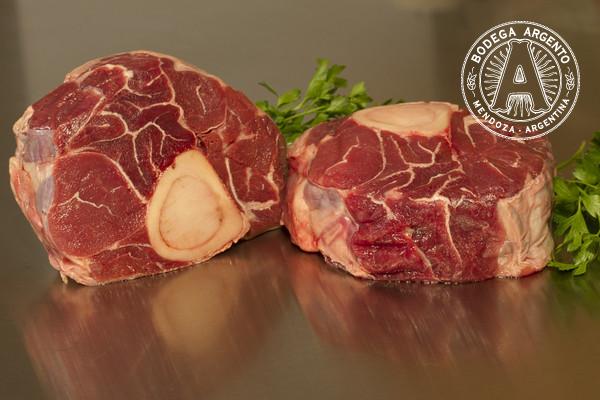
Variations abound in what type of meat should grace this Argentine revolutionary classic. Some recipes leave out the stewing beef and include only the more economical sausages and bacon, but if you go with beef choose any type of cut suitable for slow cooking; ossobuco (shank), paleta (shoulder), falda (skirt), ojo de bife (rib eye) or cuadril (rump). Smoked bacon (pancetta) and freshly-made chorizo sausages are essential – as are bones. Pick up a bag of whatever bones are on offer at the butcher’s, especially the pigs’ feet – these give a wonderful flavour to the stew. Organ meats like tripe are often included in the traditional locro but you can buck with tradition and leave them out. Just don’t tell abuela.
Corn, Winter Veggies and Spice
As well as the meat, chunky winter vegetables make this stew unique, along with dried white corn (hominy) which needs to be soaked overnight before cooking, and adds a delicious richness to the mix. Choose sturdy vegetables to warm your heart, like potatoes, sweet potatoes, squash, and pumpkin. Seasonings include ground cumin, paprika and black pepper.
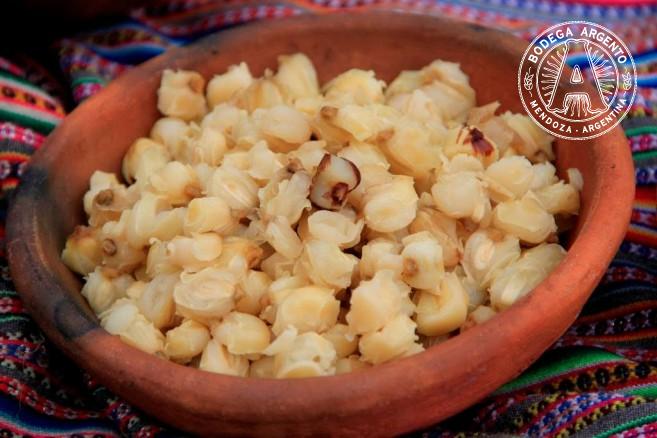
Recipe for Locro, The Real Argentina Version
One quick look at the recipes for locro reveals this dish has hundreds of variations. I took inspiration from a recipe by Dan Perlman on his Saltshaker food blog, as well as from Katie’s adaptation on her Seashells and Sunflowers blog, the Cocineros Argentinos site, and the recipes my Argentine family swear by.
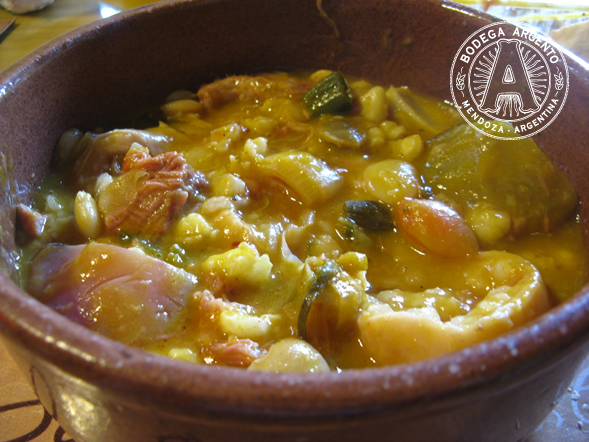
Don’t think you can whip up a locro in 30 minutes. It’s a long process and excellent if you like spending time in the kitchen chopping, flavouring, and generally creating. Serve locro piping hot, in bowls with maybe some crusty bread on the side.
Makes around 6 portions.
Ingredients
1 cup of dried white corn (hominy)
2 medium white onions, chopped
2 cloves of garlic, finely sliced
1 leek, finely sliced
200g thick-sliced smoked bacon (panceta salada), cubed
2 slightly spicy sausages (chorizo de cerdo), sliced
2 1-inch thick steaks of stewing beef, osso buco, cuadril or similar, cubed
1 cup tripe (mondongo – optional!), diced
Pigs feet (patitas de cerdo – optional)
1 cup lima beans (porotos pallares, optional)
1 teaspoon ground cumin
1 teaspoon sweet paprika
Ground black pepper and salt to taste
1 cup butternut squash (zappallo anco), cubed
1 cup sweet potato (batata), diced
1 large potato
Chopped spring onion (green onion, cebolla de verdeo) for garnish
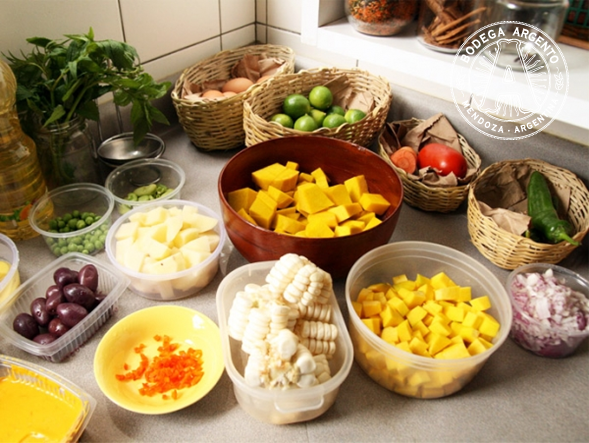
Method
Soak the dried white corn in at least two cups of water, at least for 12 hours – preferably overnight.
In a large, heavy-based pot cook the onions, garlic, leek, stewing beef, sausages, pigs feet and tripe if you’re brave, and bacon in a little vegetable oil until the onions are translucent. Add the cumin, paprika, a little salt, and freshly ground black pepper.
Cook, stirring occasionally, for 10 minutes. Add the white corn kernels and then add enough hot water to cover the ingredients by about 2 inches.
Add the vegetables and the lima beans, if using. Bring the whole thing to a boil, reduce the heat, cover and simmer for around two hours. Check the pot every 20 minutes or so and stir.
After two hours remove the pan lid and continue to cook over a low heat. Remove the bones. Mash the vegetables slowly, and as the starch gets released the mixture will thicken into a stew. Continue mashing and cooking until you have achieved a rich, thick consistency. Add a little more salt to taste.
Discover more argentine recipes in Argento Cook.


Latest posts by Louise Carr de Olmedo (see all)
- 12 FRESH ORGANIC OPTIONS IN BUENOS AIRES - December 15, 2016
- WHERE TO EAT VEGAN FOOD IN BUENOS AIRES - December 15, 2016
- WHERE TO GO GLUTEN FREE IN BUENOS AIRES - December 15, 2016


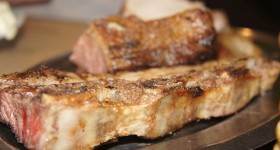 Argentine Steak: a True National Passion (With Recipe!)
Argentine Steak: a True National Passion (With Recipe!) 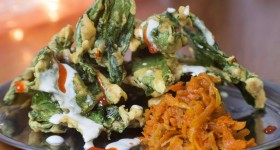 CHEF’S RECIPE: MARIANO RAMON, GRAN DABBANG IN BUENOS AIRES
CHEF’S RECIPE: MARIANO RAMON, GRAN DABBANG IN BUENOS AIRES 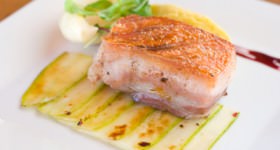 The Real Argentina Food: Roast Pork Belly Recipe
The Real Argentina Food: Roast Pork Belly Recipe  The Best Empanada Recipe: Ossobuco Empanadas
The Best Empanada Recipe: Ossobuco Empanadas  STEP-BY-STEP GUIDE TO THE PERFECT ARGENTINE ASADO
STEP-BY-STEP GUIDE TO THE PERFECT ARGENTINE ASADO  Celebrating Easter in Argentina
Celebrating Easter in Argentina  Looking Back with Bocas Abiertas: Buenos Aires Food and Wine Festival
Looking Back with Bocas Abiertas: Buenos Aires Food and Wine Festival 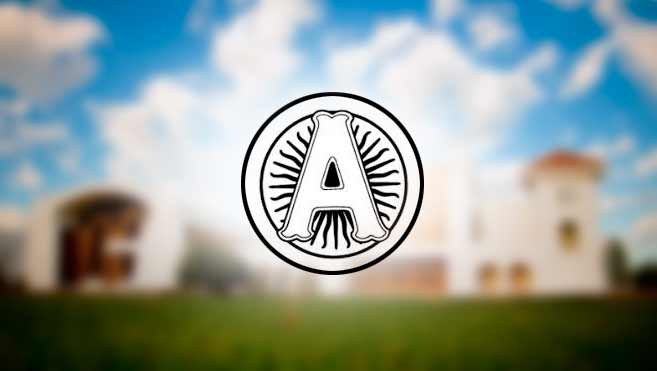 Our Navidad Recipe Book
Our Navidad Recipe Book  ‘Take 5’ Food & Wine Pairings from Top Argentine Sommeliers
‘Take 5’ Food & Wine Pairings from Top Argentine Sommeliers  The Best Empanadas in Argentina: Regional Recipes
The Best Empanadas in Argentina: Regional Recipes  Argentine chefs’ curious kitchens
Argentine chefs’ curious kitchens 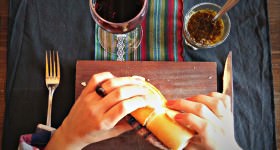 CHIMICHURRI: FAMOUS SAUCE OF ARGENTINA
CHIMICHURRI: FAMOUS SAUCE OF ARGENTINA